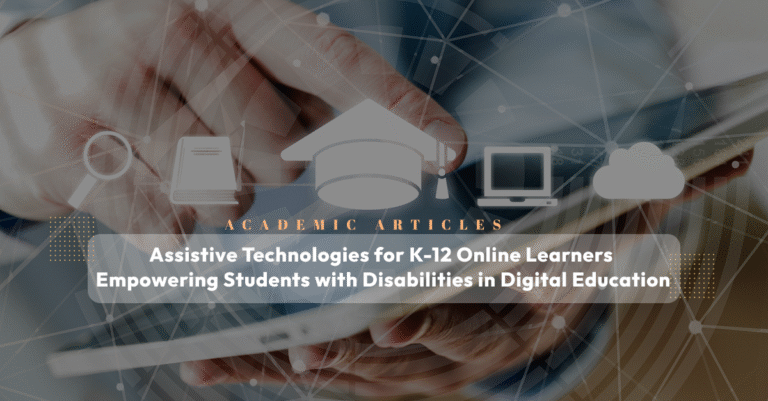The world of education has changed dramatically in recent years. More students than ever are learning online, attending virtual classrooms from the comfort of their homes. While online learning brings flexibility and access to many, it can be challenging for students with disabilities. Thankfully, assistive technologies are stepping in to bridge that gap, helping students with various needs fully participate in their education.
We’ll explore what assistive technologies are, how they help K-12 students with disabilities, and why they’re essential for making online education truly inclusive.
What Are Assistive Technologies?
Assistive technologies (AT) are tools, devices, or software designed to help people with disabilities perform tasks they might otherwise find difficult. In the context of online learning, assistive technologies support students in accessing educational materials, participating in lessons, and completing assignments.
Types of Assistive Technologies in Online Education

Here are some of the most common assistive technologies that help K-12 online learners:
Screen Readers
For students who are blind or visually impaired, screen readers convert text on a computer screen into spoken words. Programs like JAWS (Job Access With Speech) or NVDA (NonVisual Desktop 0Access) help students navigate websites, read assignments, and write emails.
Speech-to-Text Software
Students with physical disabilities or learning disorders like dyslexia may find it easier to speak rather than type. Speech-to-text tools like Dragon NaturallySpeaking or built-in features like Google Voice Typing let students dictate their thoughts, turning speech into written text in real-time.
Text-to-Speech (TTS)
On the flip side, text-to-speech tools read out written content for students who have difficulty reading. Tools like NaturalReader or Read&Write help students follow along with lessons by hearing the words as they read.
Closed Captioning and Transcripts
For students who are deaf or hard of hearing, closed captions in videos or live transcripts of lessons provide essential access to spoken content. Many online learning platforms now automatically generate captions, and teachers can provide written notes or transcripts for recorded lessons.
Alternative Keyboards and Input Devices
Students with motor disabilities might struggle with standard keyboards or mice. Special adaptive keyboards, switch devices, or even eye-tracking technology allow these students to control a computer in ways that fit their needs.
Visual Aids and Adjustments
Students with cognitive disabilities or attention disorders often benefit from visual support. Features like highlighting tools, adjustable font sizes, or apps that block distractions can help students focus and engage.
Why Assistive Technologies Matter in Online Learning
Without assistive technologies, many students with disabilities would face serious obstacles in online education.
These tools help create equal opportunities by:
- Giving students independence in completing assignments or participating in class discussions.
- Improving communication between teachers, students, and parents.
- Building confidence by helping students overcome challenges that might otherwise discourage them.
- Ensuring compliance with laws like the Americans with Disabilities Act (ADA) or international standards that require schools to provide accessible learning environments.
When schools embrace assistive technologies, they send a clear message: every student deserves the chance to learn, grow, and reach their potential.
Moving Forward: The Future of Inclusive Online Education
As technology advances, assistive tools will continue to improve. Artificial intelligence is already making it possible to create more personalized support for students with disabilities. Schools, teachers, and parents must work together to ensure these technologies are available and used effectively.
Online learning shouldn’t leave anyone behind. By using assistive technologies, we can ensure that digital classrooms are welcoming and supportive for all students.
Final Thoughts
Students with the right tools can thrive in online education just like their peers. The goal of education, whether online or in person, is to give every child the chance to succeed. Assistive technologies are helping make that goal a reality.
Share, Discuss, or Ask
Do you have a child in an online school, or are you considering enrolling your child in one? We’d love to hear about your experiences. Let us know what has been or may be decisive in the dilemma of traditional vs. Online.
If you have questions, please visit us at EduWW or email [email protected].



